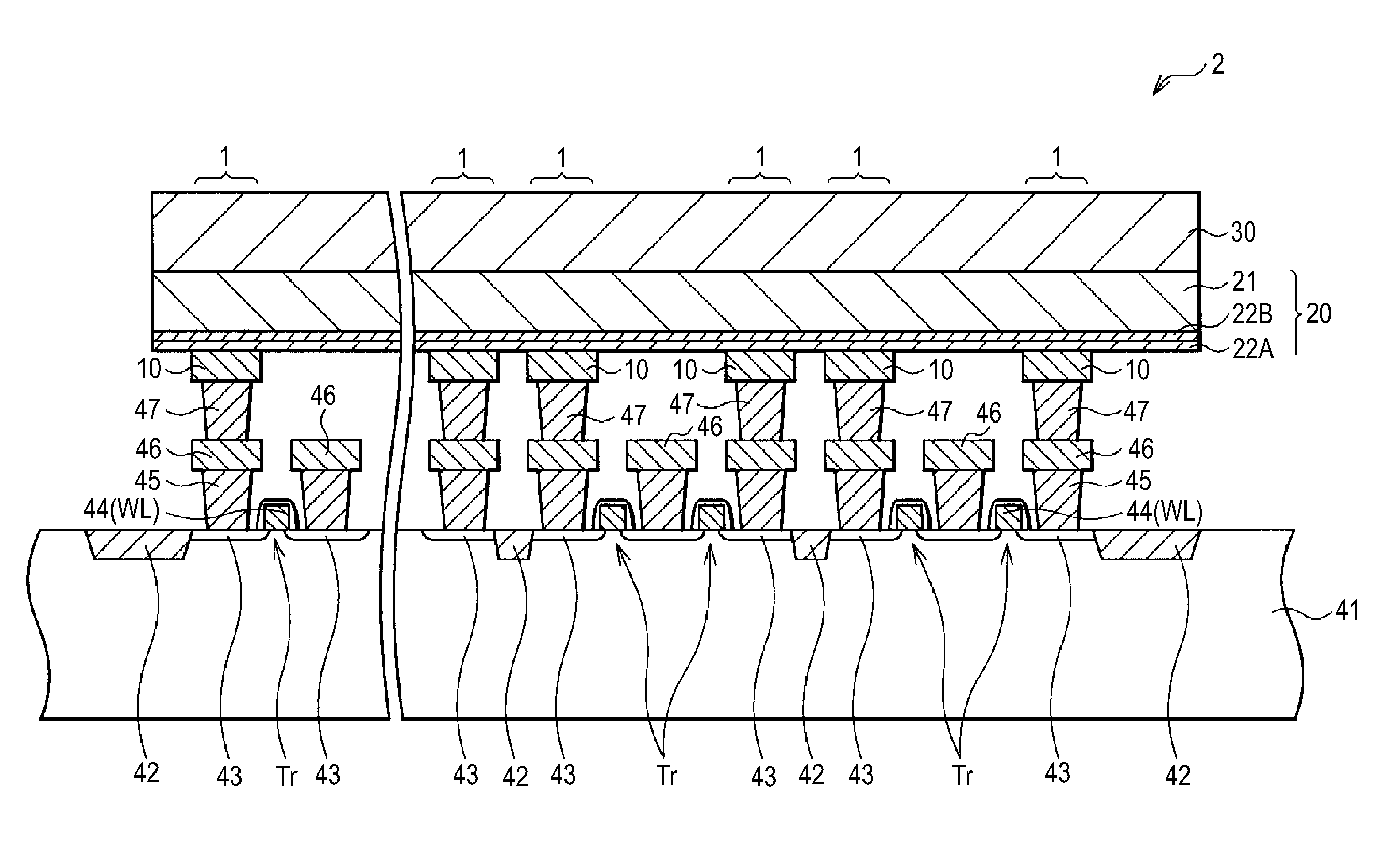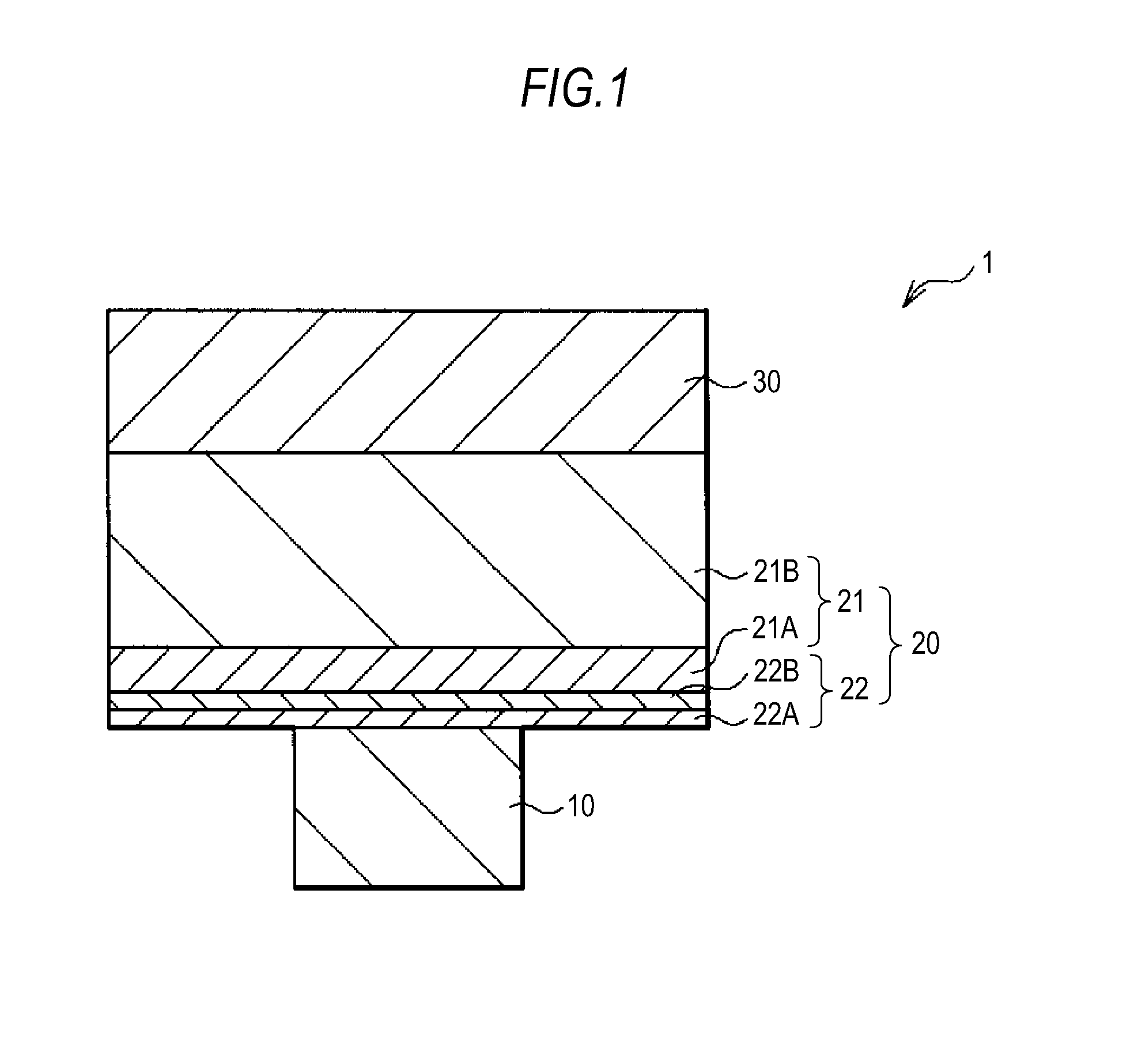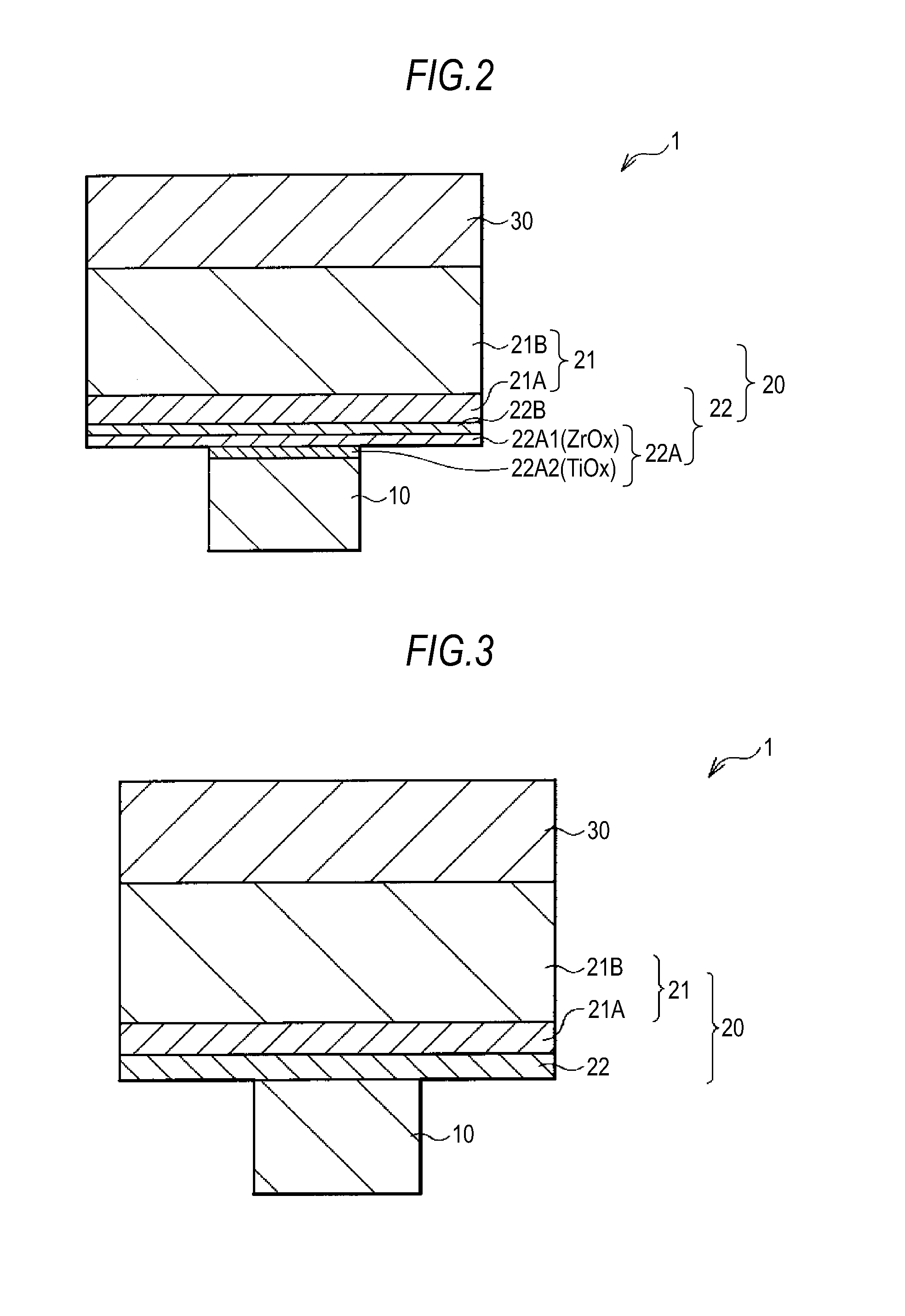Memory component, memory device, and method of operating memory device
a memory component and memory device technology, applied in semiconductor devices, digital storage, instruments, etc., can solve the problems of insufficient erasure performance, and insufficient resistance separation width between the resistance value in the written state and the resistance value in the erased state. , to achieve the effect of reducing resistance, preventing an unnecessary oxidation reaction, and improving the repeatability of the effect of durability
- Summary
- Abstract
- Description
- Claims
- Application Information
AI Technical Summary
Benefits of technology
Problems solved by technology
Method used
Image
Examples
first embodiment
[0084]FIG. 1 is a cross-sectional view showing a configuration of a memory component 1 according to a first embodiment of the present invention. The memory component 1 includes a lower electrode 10 (first electrode), a memory layer 20, and an upper electrode 30 (second electrode) which are provided in that order. The memory layer 20 includes an ion source layer 21 and a resistance variable layer 22 which are provided in that order from the side of the upper electrode 30.
[0085]The lower electrode 10 is provided on a silicon substrate 41 on which a CMOS (Complementary Metal Oxide Semiconductor) circuit, for example, is formed as described later (see FIG. 13), and serves as a connection portion to the CMOS circuit portion. The lower electrode 10 is formed of a wiring material used in the semiconductor process, such as, for example, tungsten (W), tungsten nitride (WN), copper (Cu), aluminum (Al), Molybdenum (Mo), tantalum (Ta), and silicide. When the lower electrode 10 is formed of a ma...
modification 1
(Modification 1)
[0147]In the embodiment described above, a case where the resistance variable layer 22 has a configuration in which the first layer 22A made of the transition metal oxide and the second layer 22B containing the aluminum oxide as its main component are laminated in that order from the side of the lower electrode 10 has been described. However, the resistance variable layer 22 may have a single-layered structure in which the aluminum oxide and the transition metal oxide are contained in a mixed state as shown in FIG. 3.
[0148]In this case, when a positive voltage is applied to the memory component 1 so that the upper electrode 30 is on the positive potential side and the lower electrode 10 is on the negative potential side, for example, in the ion source layer 21, the Al ions and the ions of the metal element contained in the ion source layer 21 are moved towards the lower electrode 10 side. In this case, on the lower electrode 10, a conduction path is formed by the red...
modification 2
(Modification 2)
[0150]In the embodiment described above, a case where the ion source layer 21 has the two-layered structure of the intermediate layer 21A and the ion supply layer 21B has been described. However, the ion source layer 21 does not necessarily have the intermediate layer 21A but may have a single-layered structure of only the ion supply layer 21B as shown in FIG. 4.
PUM
 Login to View More
Login to View More Abstract
Description
Claims
Application Information
 Login to View More
Login to View More - R&D
- Intellectual Property
- Life Sciences
- Materials
- Tech Scout
- Unparalleled Data Quality
- Higher Quality Content
- 60% Fewer Hallucinations
Browse by: Latest US Patents, China's latest patents, Technical Efficacy Thesaurus, Application Domain, Technology Topic, Popular Technical Reports.
© 2025 PatSnap. All rights reserved.Legal|Privacy policy|Modern Slavery Act Transparency Statement|Sitemap|About US| Contact US: help@patsnap.com



